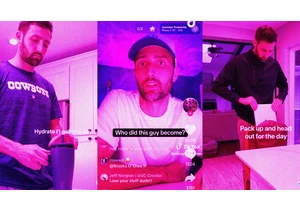Flooded with fake and misleading reviews on many of its products, Amazon is going on the offensive, filing suit against the administrators of what it says are over 10,000 Facebook groups that are used to manage those reviews and incentivize people to post them.
In a suit filed Monday, the retailer said it hopes to “identify bad actors” and remove any fake reviews that its own technology and monitoring haven’t yet caught.
“Our teams stop millions of suspicious reviews before they’re ever seen by customers, and this lawsuit goes a step further to uncover perpetrators operating on social media,” said Dharmesh Mehta, Amazon’s vice president of selling partner services, in a statement. “Proactive legal action targeting bad actors is one of many ways we protect customers by holding bad actors accountable.”
The action comes as the issue of misleading reviews continues to grow. Fake reviews artificially inflate a product’s star rating (or lower a competitor’s rating), making it more appealing to casual shoppers. That can lead to them buying something that’s substandard—or just plain junk.
The problem has become so widespread that a cottage industry has popped up, analyzing a product’s reviews and filtering out ones that might be fraudulent. Sites like ReviewMeta can help shoppers see that, for instance, a product with a 4.4 rating on Amazon would likely receive just a 1.9 rating if it weren’t artificially inflated.
Amazon accuses those in charge of the Facebook groups of encouraging people to write fake reviews in exchange for free products or money. One of the groups identified in the lawsuit is “Amazon Product Review,” which Amazon says had more than 43,000 members until Meta took down the group earlier this year.
Amazon did not disclose the names of the individuals it is pursuing or the names of other Facebook groups.
The action comes after an antitrust regulator in the U.K. launched an investigation last year into whether Amazon (as well as Google) has done enough to eliminate fake reviews. U.S. lawmakers raised a similar question in 2019.
That same year, the Federal Trade Commission (FTC) fined a website that paid an operative to post reviews on Amazon.
Amazon says it has over 12,000 employees who look for fraud and abuse (including fake reviews) on its site. In 2020, it proactively stopped over 20 million fake reviews, it says.
The 10,000 groups mentioned in the suit are not all currently active. Amazon says they represent the total reported to Meta since 2020—and at least half have already been taken down.
The Facebook accounts targeted in the suit might take care of some of the fake review issues, but they won’t weed out all of them. If you’re worried about the star rating of an item, especially after checking it on a site like ReviewMeta or Fakespot, there are a few things you can do to protect yourself:
- Read the review, sorting by newest. You’ll not only get a sense of how the product is performing these days, but also you can compare what recent users have to say. Notice the patterns in the writing to see if they sound like how a normal person would write. And give less weight to the ones that leave a star rating, but no comments.
- Look beyond Amazon. This is especially worth doing for bigger ticket items. See if reviews on other sites, by professional critics and streamers on YouTube and other channels, tend to jibe with what you see on Amazon.
- Weigh verified reviews. A “verified purchase” on Amazon means the company has been able to confirm that the reviewer actually bought the product, giving more credence to their opinion. They’re not foolproof, though. If you spot red flags like several misspelled words and bad grammar, proceed with caution.
Chcete-li přidat komentář, přihlaste se
Ostatní příspěvky v této skupině
On this week’s Most Innovative Companies podcast, Cloudflare COO Michelle Zatlyn talks with Fast Company staff writer David Salazar about hitting $1B in revenue and going global, as well as

If you’ve built an audience around documenting your 9-to-5 online, what happens after you hand in your notice?
That’s the conundrum facing Connor Hubbard, aka “hubs.life,” a creator who

OpenAI should continue to be

WhatsApp should prepare to leave the Russian market, a lawmaker who regulates the IT sector

This is an edition of Plugged In, a weekly newsletter by Fast Company global technology editor Harry McCracken. You can sign up to receive it each Friday and read all issues


